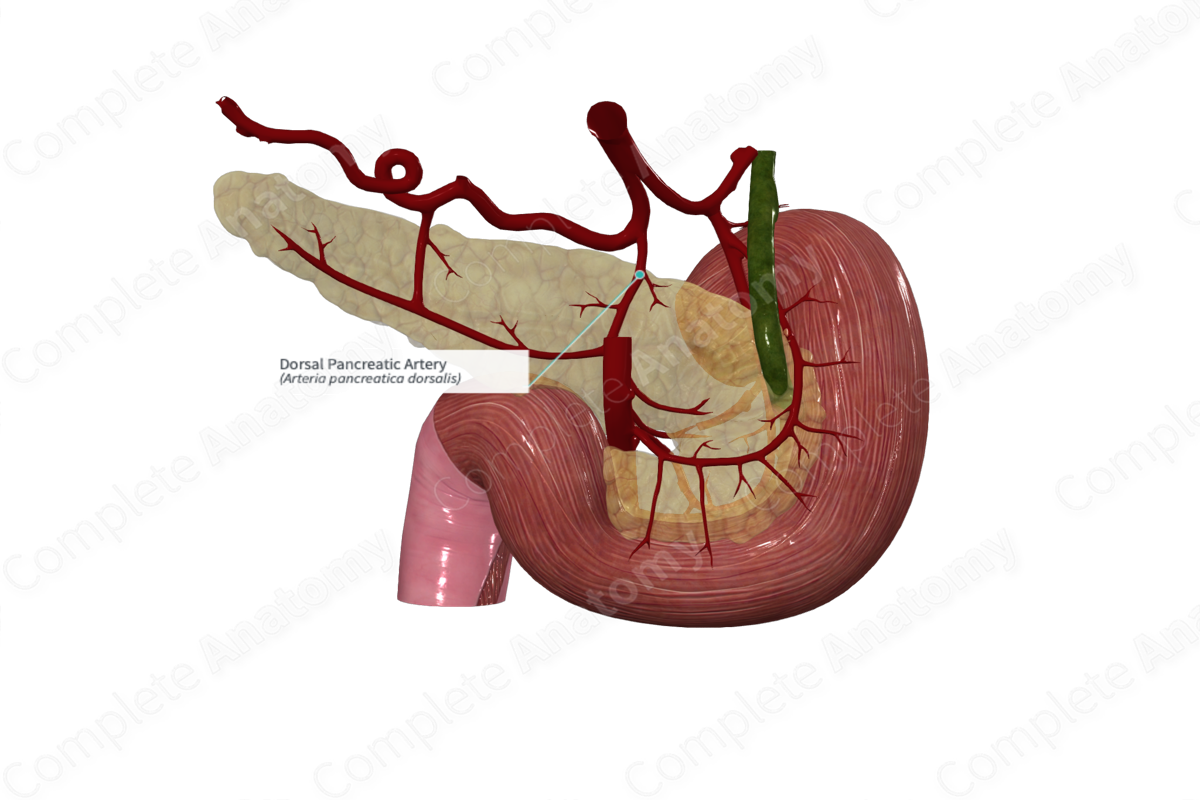
Quick Facts
Origin: Splenic artery.
Course: Along the length of the pancreas anastomosing with pancreaticoduodenal artery branches (right) and other splenic artery branches.
Branches: Left and right branches.
Supplied Structures: Pancreas.
Related parts of the anatomy
Origin
The dorsal pancreatic artery arises from the proximal portion of the splenic artery, but is highly variable (Tsutsumi et al., 2014).
Course
The dorsal pancreatic artery courses posterior to splenic vein.
Branches
Gives off numerous branches, but the general pattern is that it splits into right and left branches (Tsutsumi et al., 2014). The right branch (anastomotic branch) passes to the right along the posterior surface or within the parenchyma of the pancreas. It extends to anastomose with branches of the superior and inferior posterior pancreatic arteries. The left branch, considered the terminus of the artery (terminal branch), passes along the inferior surface of the pancreas to the left into its tail anastomosing with the transverse pancreatic artery.
Supplied Structures
The dorsal pancreatic artery supplies the entire pancreas (uncinate process, head, neck, body, and tail) by contributing to arterial arcades of the pancreas.
References
Tsutsumi, M., Arakawa, T., Terashima, T., Aizawa, Y., Kageyama, I., Kumaki, K. and Miki, A. (2014) 'Morphological analysis of the branches of the dorsal pancreatic artery and their clinical significance', Clin Anat, 27(4), pp. 645-52.
Learn more about this topic from other Elsevier products




